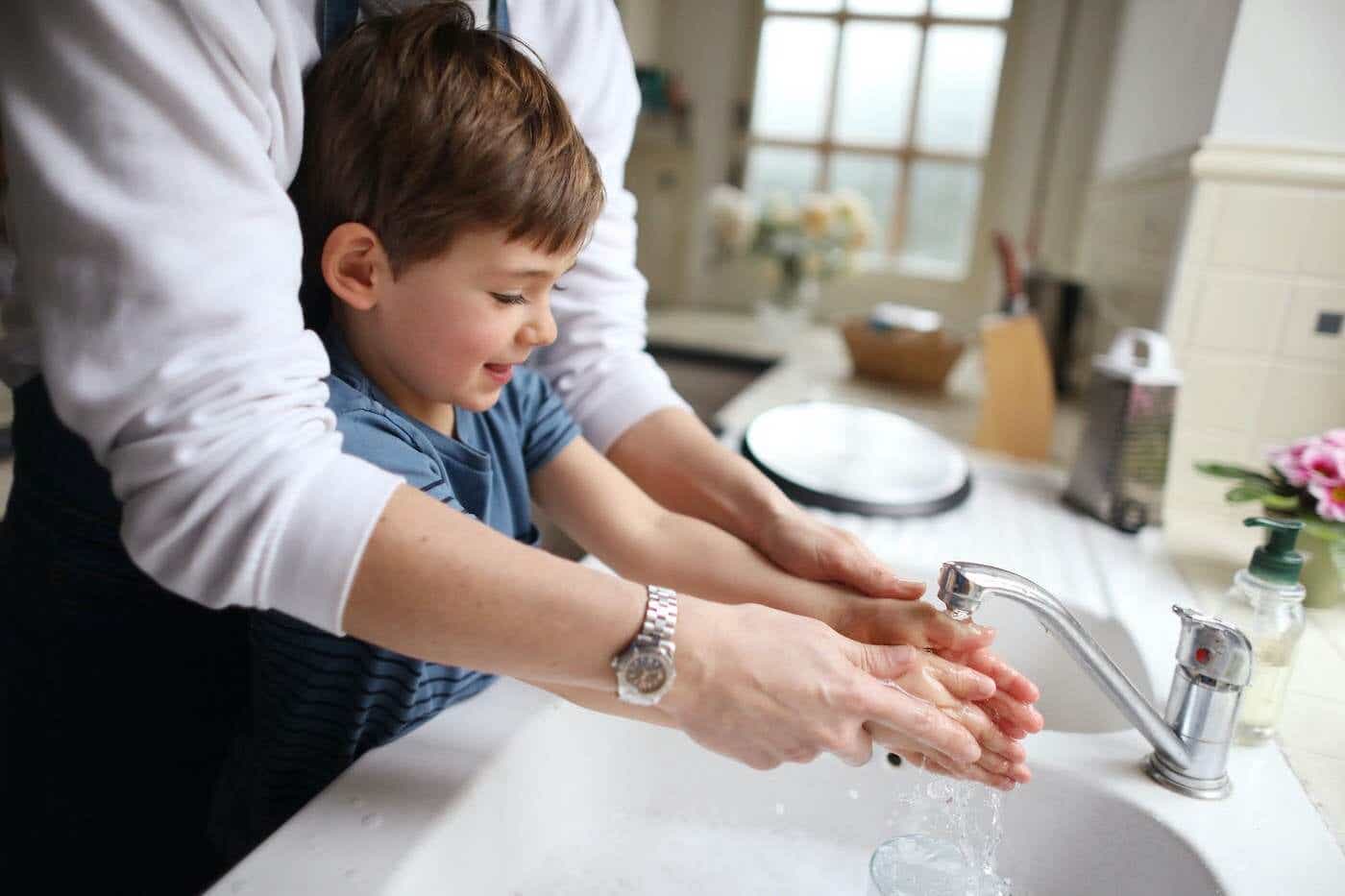Since we’re continuing to live in uncertain times, our Wake-Up Call newsletter turned to Dr. Maiysha Jones Senior Scientist for Safeguard Hand Soap and Sanitizer for some advice on when we should be sudsing up — and where else to clean so our handwashing isn’t in vain.
How do I get my kids to wash their hands? What is the proper way to watch your hands?
Start young. A good first step is to help kids understand why handwashing is important. This can be an early lesson in how to wash away germs to help keep them and the family healthy. According to the CDC, hand washing is one of the most effective ways to prevent the spread of germs and one of the best ways to protect from getting sick.
As kids get older, lean in to them wanting to help and be independent. Kids like to have a job to do and they want to do it themselves! So, make it easy and fun. Add a step stool so they can reach the handles and the soap, sing a song or make it a game, and reward good technique!
Proper handwashing begins with clean running water. Wet your hands and rub them together with soap making sure to get between your fingers, under your nails, and the backs of your hands. Scrub for at least 20 seconds, rinse with clean running water, and then dry with a clean towel.
What are the key times people should wash their hands?
We should wash our hands after sneezing, coughing, blowing your nose, or caring for someone who is sick.
We should also wash our hands anytime we’ve been in a public place or touched shared objects or surfaces like door handles or shopping carts. And of course, after using the restroom, interacting with animals or garbage, when preparing food, and before eating.
What are the tradeoffs (if any) between washing your hands with soap and water vs. with hand sanitizer?
While soap and water is the best choice for hand washing, an alcohol-based hand sanitizer is a good alternative when soap and water are not available. Be aware that sanitizers do not eliminate all types of germs, and they are not as effective on visibly dirty or greasy hands. Also, as with proper handwashing, there is a proper way to use hand sanitizers. You should apply the product to the palm of one hand and rub hands together using enough to cover all surfaces. Continue rubbing until hands are dry. Check the label to make sure the sanitizer contains at least 60% ethanol or isopropanol. These are the only 2 alcohols permitted by the US FDA to be active ingredients in alcohol-based hand sanitizers.
I just washed my hands, but are there other places I should clean as well, so as not to defeat the purpose of washing my hands?
Be mindful of what you are touching after washing your hands. Be sure to clean and disinfect any shared surfaces frequently. This can be a challenge in public spaces, but simple things like using a tissue to open the door, for example, can help keep those just-washed hands clean! When was the last time you disinfected your cell phone, tablet, remote control, or steering wheel? What about the doorknobs in your home? Consider disinfecting these high-touch objects and surfaces that we do have control over on a regular basis.
Do you have a favorite song you like to sing to keep on track for washing your hands for 20 seconds?
“Happy Birthday” is always a good choice! Sing it through twice, and you should hit that 20-second mark!
What do you recommend in between washing your hands to prevent Covid-19 transmission?
The best way to prevent the transmission of any illness is to follow the guidance of public health experts. In addition to washing your hands often and cleaning and disinfecting high-touch surfaces, avoiding close personal contact by practicing social distancing, wearing a mask that covers the nose and mouth, staying home when ill or after exposure to an ill person, and coughing or sneezing into your elbow are all good recommendations.
This originally appeared on Medium.









